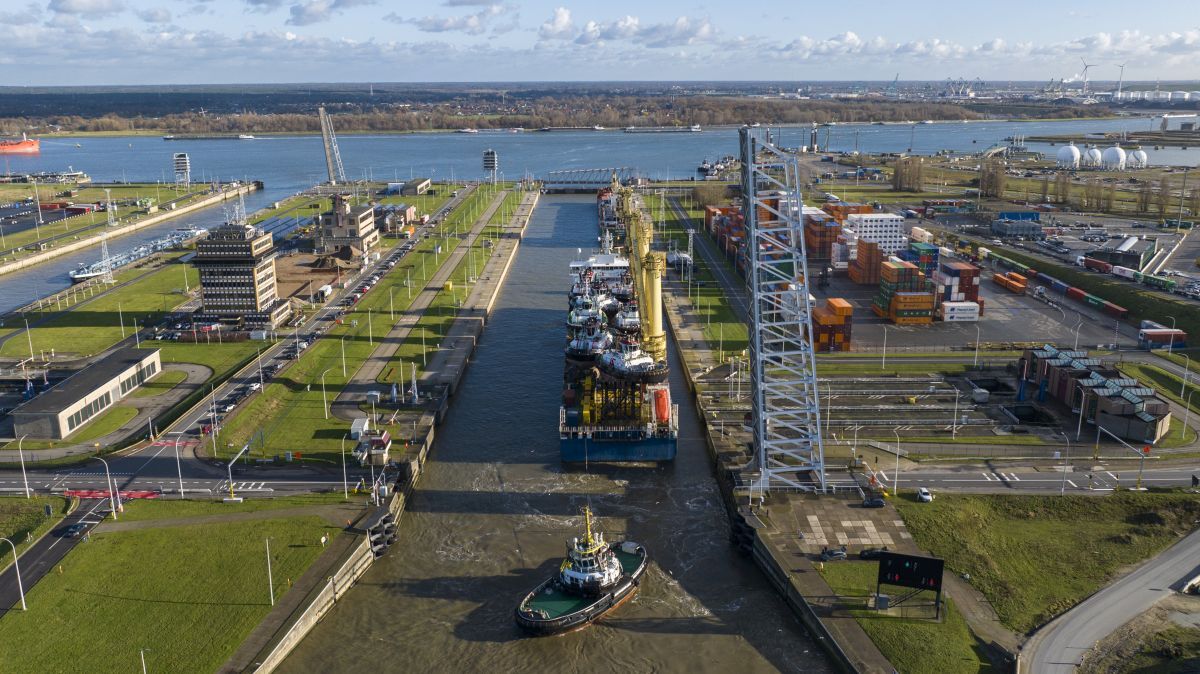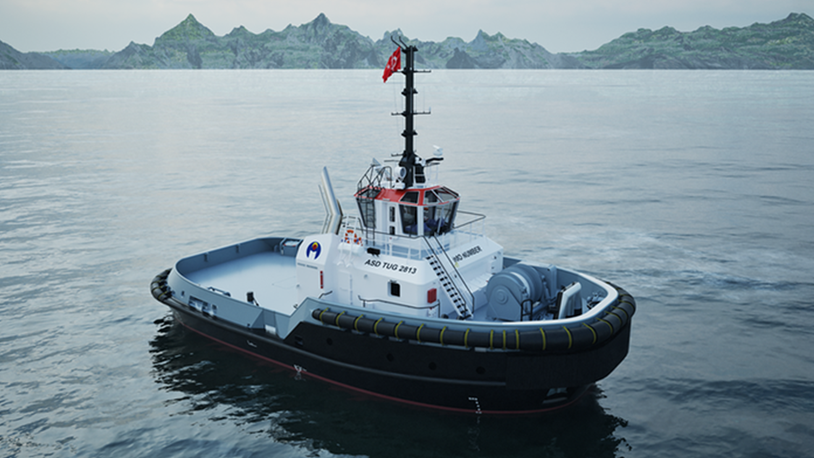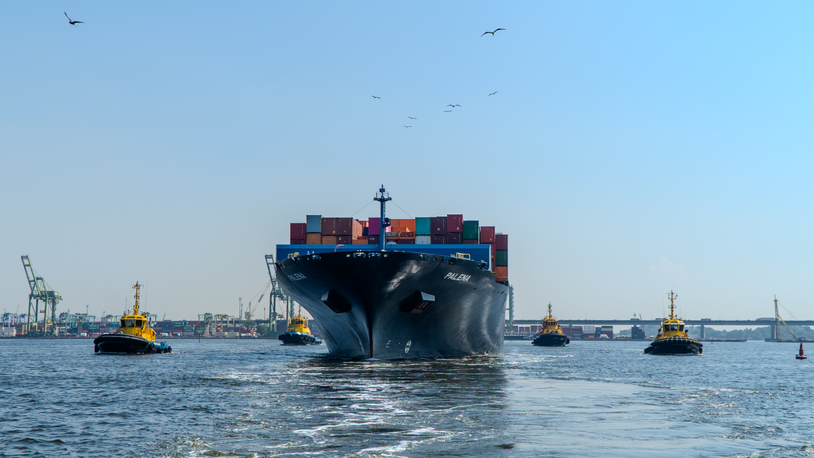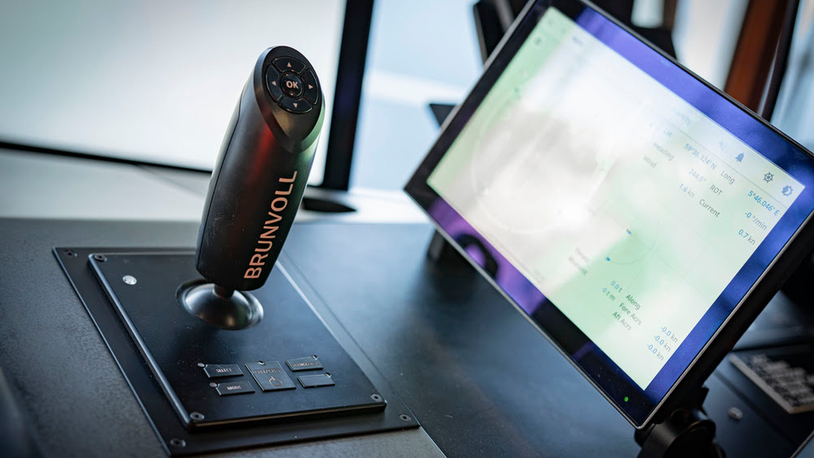Business Sectors
Events
Contents
Register to read more articles.
European ports urge industry to adopt clean fuels
Benelux port authorities are investing in producing and bunkering green fuels and using them to power marine-service vessels
Ports in northern Europe are calling on the European industry to act on the recently published European Commission’s Clean Industrial Deal, which encourages the production of alternative fuels such as environmental hydrogen, methanol and ammonia, and for companies in Europe to adopt these.
Chief executives of Benelux ports, including Jacques Vandermeiren of Port of Antwerp-Bruges and Boudewijn Siemons of Port of Rotterdam, back this EU initiative and call for infrastructure investments enabling the import, production and distribution and storage of clean energy in Europe.
In a joint response, the ports stressed the importance implementing the deal quickly and urged national governments to act on energy prices, infrastructure and EU regulations.
“There is no one simple solution; it is a sum. If we want to preserve our industry and prosperity for future generations, all parties must now turn their words into deeds,” said Mr Vandermeiren and Mr Siemons in a joint statement in March 2025. Port authorities want to jointly contribute to implementing the deal.
Port of Antwerp-Bruges is already using hydrogen fuel for marine services. It inaugurated the world’s first hydrogen-fuelled tugboat, CMB.TECH’s Hydrotug, in December 2023 and a hydrogen bunkering system. This 30-m, 496-gt tug has a beam of 13 m and 65 tonnes of bollard pull coming from two dual-fuel BeHydro V12 engines, producing a combined 4,100 kW of power to drive two Schottel SRP 460 type Z drives. These are linked to diesel filters and selective catalytic reduction (SCR) units to minimise NOx emissions and to comply with IMO Tier III and EU stage V emissions regulations. Hydrotug has enough compressed hydrogen fuel, stored in pressurised bottles on deck, for a day’s operations before new fuel is needed.
Port of Antwerp-Bruges also introduced the world’s first methanol-powered tugboat in May 2024, advancing its strategy to become a climate-neutral port by 2050.
A tugboat was converted to store and combust methanol in retrofitted Anglo Belgian Corp (ABC) dual-fuel engines under the EU-funded Fastwater project.
Methatug has an overall length of 30 m, a traction force of 50 tonnes and can store 12,000 litres of methanol, enough for two weeks of tug work. This 584-gt vessel has two ABC 8DAC dual-fuel, medium-speed engines for methanol and marine gasoil. Mr Vandermeiren welcomed this tugboat conversion to demonstrate the feasibility of methanol as a sustainable fuel. He said it is part of the port authority’s efforts to cut emissions from the tugboat fleet.
These efforts were accelerated in November 2024 when Port of Antwerp-Bruges took delivery of six reverse stern drive (RSD) tugboats, including one operating on batteries, to boost ship handling and towage, while lowering emissions.
Damen Shipyards delivered six tugs built to its RSD 2513 design in Vietnam from a heavy-lift cargo ship at the port. One of these RSD tugs has an energy storage system on board with enough charge to undertake two towage operations on a single charge and has up to 70 tonnes of bollard pull.
Volta 1 can be fully recharged in just two hours from a new 1.5-MW charger and onshore electric infrastructure Damen was contracted to deliver and commission.
The other five tugboats are more efficient than existing vessels and have Damen’s SCRs for IMO Tier III compliance. RSD tugs are designed with a dual-bow principle, making them manoeuvrable and versatile for both forward and backward towing operations. Port of Antwerp-Bruges is converting more tugs to run on sustainable biofuels.
Dutch investments
Port of Rotterdam is also working towards becoming carbon neutral by 2050 and plans to cut CO2 emissions by at least 50% by 2030 compared with 1990 levels. All its marine services vessels run on sustainable HVO100 biofuel, and it intends to purchase new emissions-free vessels. It aims to provide shore power to 90% of container, cruise, ferry and passenger ships using the port.
It is investing in infrastructure and green projects. In the Porthos, facilities for transporting and storing CO2 on the Maasvlakte are expected to be operational in 2026, and it is installing shore power in container terminals, such as at Waalhaven.
Over the next five years, the Port of Rotterdam Authority is committed to improving the living environment, safety, nature and biodiversity in and around the port. Other ongoing investments are in Amaliahaven, renovating the Rozenburg Lock and widening the Yangtze Canal. The authority intends to test green dredging activities with a dredger operating on hydrogen fuel under the Prisma programme.
Gasunie, Shell and the Port of Rotterdam Authority are building a plant to produce green hydrogen using offshore wind energy at Maasvlakte and plan to transport it to industrial sites in northern Europe.
Shore power is installed at Heerema’s facilities at Caland Canal for its offshore support vessels and at Waalhaven where Boskalis docks its vessels.
Safety and security
When the EU formulates its strategy for developing sustainable ports in the region, it must enshrine safety as the overarching goal of harbour services, according to the European Tugowners Association (ETA), European Marine Pilots Association (EMPA) and European Dredging Association (EuDA).
The three organisations ran a workshop in mid-March 2025, covering the pivotal role of human action in decarbonising the port services sector. One of the main outcomes from that workshop was that the upcoming European Port Strategy should be all-comprehensive, “addressing a number of issues that affect the environmental and social sustainability of the European port services community,” the three organisations said in a joint statement.
“The European Port Strategy should adopt a sustainable approach that balances environmental considerations and social aspects,” they said. “Additionally, it should acknowledge the full complexity of the logistics ecosystem within ports. In this context, it is important to highlight the main and most essential goal of port services is safety.”
The approach to safety is paramount for ports. It encompasses protecting port workers and residents, navigational safety, protecting port assets, and safety for visiting vessels, the groups said. And these protections must be undertaken while ensuring operational efficiency and environmental protection.
EMPA, ETA and EuDA are calling for further investment in harbours and port services, such as pilotage, towage and dredging, to fulfil safety commitments and achieve climate goals.
Revenue from the EU’s emissions trading scheme could be used to facilitate decarbonisation in ports and port services.
“It is crucial funding is directed toward ports and harbour services,” said the ETA, EMPA and EuDA. “Ports should be recognised as green energy hubs… and play an essential part in decarbonising the shipping sector.”
These organisations are calling on the European Commission to simplify policies and ensure regulation compliance is streamlined “to ensure a level playing field among ports.”
They want the European port strategy to address geopolitical risks impacting maritime operations, such as GPS jamming and spoofing, cyber attacks on navigation systems and damage to subsea cables, and to prioritise security as a fundamental factor.
“Within this unpredictable context, highly trained professionals, such as maritime pilots, are essential as they can override autonomous systems and safely navigate and manoeuvre ships, keeping supply chains open and the environment clean,” said the EMPA, ETA and EuDA.
Port of Antwerp-Bruges and Port of Rotterdam will be presenting their latest developments and challenges at Riviera’s TUGTECHNOLOGY ‘25 which will be held in Antwerp, 22-23 May 2025. Click here for more information on this industry-leading event.
Related to this Story
Events
Maritime Environmental Protection Webinar Week
Cyber & Vessel Security Webinar Week
The illusion of safety: what we're getting wrong about crews, tech, and fatigue
Responsible Ship Recycling Forum 2025
© 2024 Riviera Maritime Media Ltd.














